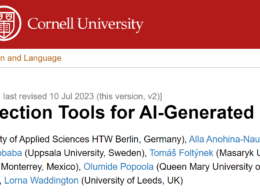the health strategist
institute, portal & consulting
for workforce health & economic prosperity
Joaquim Cardoso MSc.
Servant Leader, Chief Research & Strategy Officer (CRSO),
Editor in Chief and Senior Advisor
January 21, 2024
This is an Executive Summary of the article “‘Oh gosh, I have to become a coder’: how employers are preparing the next generation workforce”, published on the Financial Times, and authored by Emma Jacobs.
What is the message?
The future workforce is undergoing significant transformation driven by technology, sustainability, and changing demographics.
Employers are adapting to these shifts by categorizing jobs into “sunrise” and “sunset” roles, providing training for at-risk employees, and anticipating emerging skills through proactive strategies.
Examples and Statistics:
Sunrise and Sunset Roles:
Standard Chartered, with over 80,000 global employees, categorizes jobs into “sunrise” roles, such as computing and cloud management, expected to see increased demand, and “sunset” roles vulnerable to automation.
A quarter of global CEOs expect a workforce reduction of at least 5% due to the deployment of generative AI tools.
Standard Chartered, with over 80,000 global employees, categorizes jobs into “sunrise” roles, such as computing and cloud management, expected to see increased demand, and “sunset” roles vulnerable to automation
A quarter of global CEOs expect a workforce reduction of at least 5% due to the deployment of generative AI tools.
Proactive Workforce Preparation:
Standard Chartered offers training to at-risk employees, with over 32,000 participants taking courses from data analytics to sustainable finance and leadership.
Emerging Trends:
The World Economic Forum identifies technology and sustainability as the primary drivers of economic growth.
Demand for AI roles, driven by advancements in machine learning and generative AI, has spread beyond big tech companies, with roles like prompt engineering and jobs in ethics and governance witnessing increased demand.
Green Transition:
Sander Van’t Noordende, CEO at Randstad, notes a shortage in green workers as companies pursue net-zero goals. Job postings requiring green skills have grown by 20% in the past year, even as one in eight workers possesses relevant skills.
Demographic Shifts:
Changing demographics, particularly aging populations, contribute to job growth in sectors such as care and health. OECD senior economist Stijn Broecke highlights an increased demand for hands-on roles due to a growing retired population.

Conclusions and Recommendations:
Adaptability is Key:
The workforce must embrace adaptability as technology, sustainability, and demographics shape the job landscape. General capabilities like creativity, emotional intelligence, and continuous learning are crucial for career resilience.
Strategic Skill Development:
Employers should focus on providing training for emerging skills and ensuring that employees are equipped to handle the evolving demands of their industries.
Monitoring Trends:
Both employers and individuals should stay informed about emerging trends in technology and industry shifts, understanding that job roles are iterative and require ongoing relevance.
Flexibility in Hiring:
Employers should prioritize flexibility in hiring, recognizing that the nature of roles may change rapidly. Emphasizing growth flexibility and the ability to adapt is crucial.
Long-Term Perspective:
Instead of panicking about specific “jobs of the future,” individuals are advised to understand the evolving technology landscape and adopt a long-term perspective to stay relevant in their careers.
To summarize:
The future workforce will thrive by embracing change, fostering adaptability, and staying attuned to the dynamic interplay of technology, sustainability, and demographic shifts.












